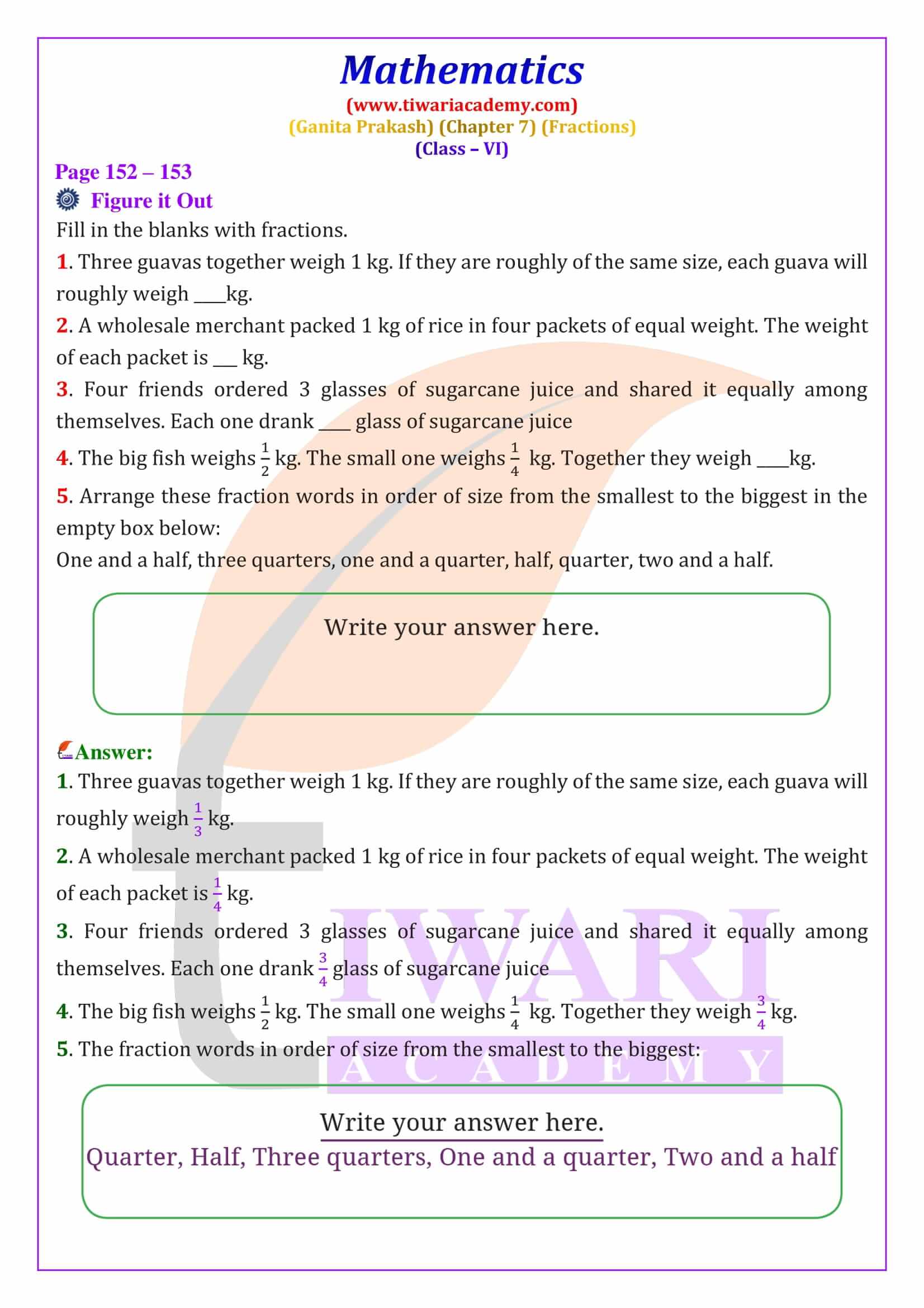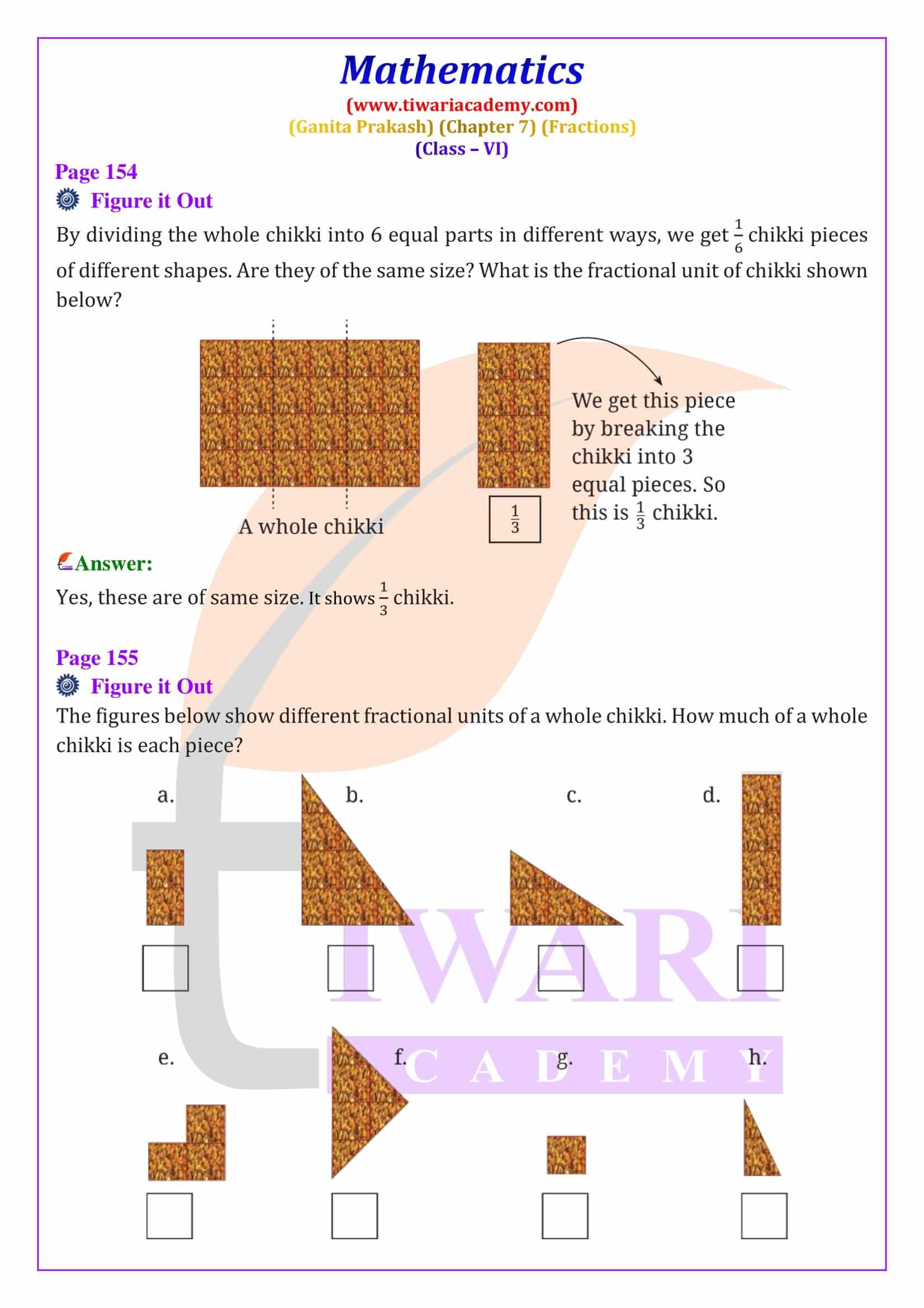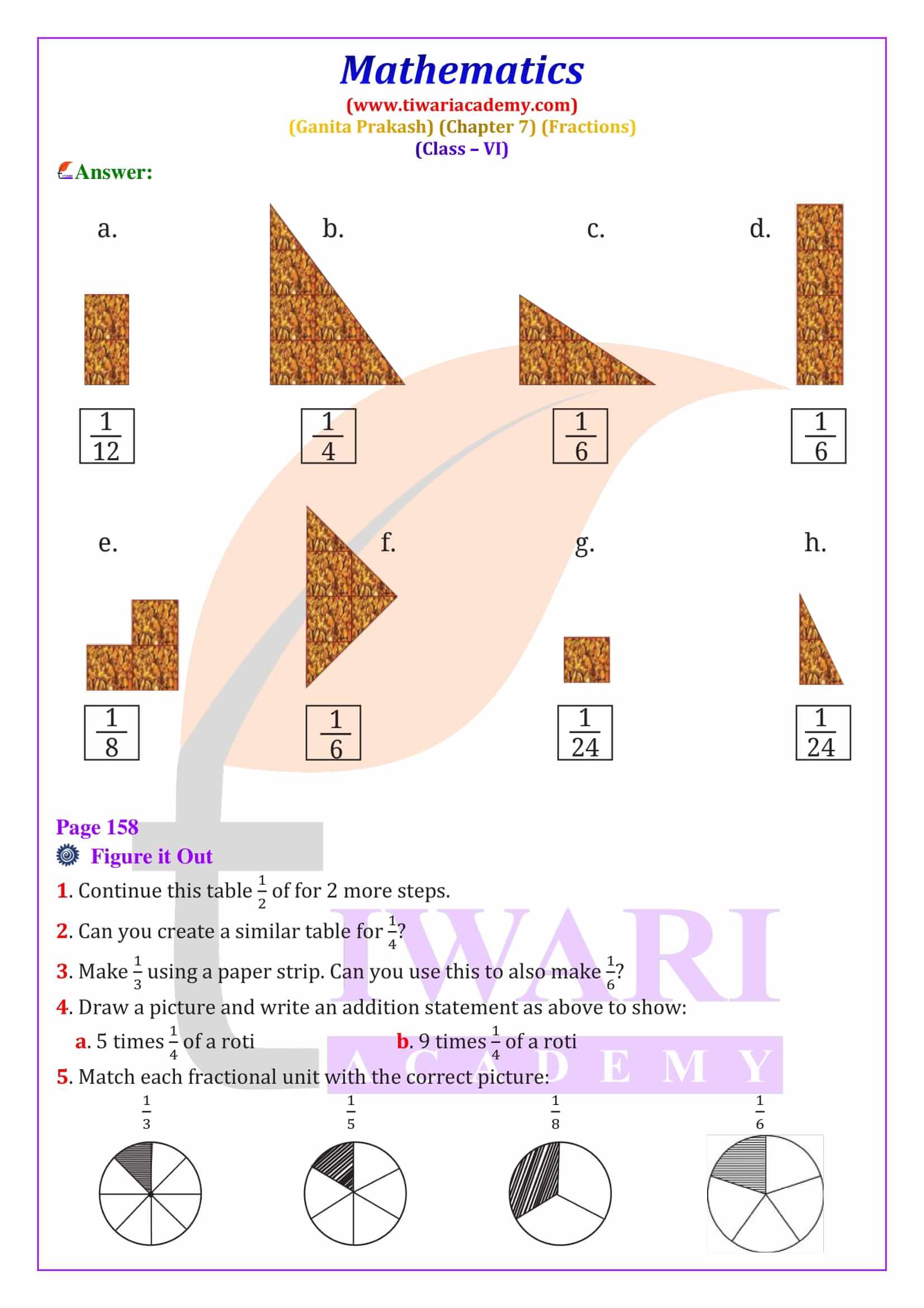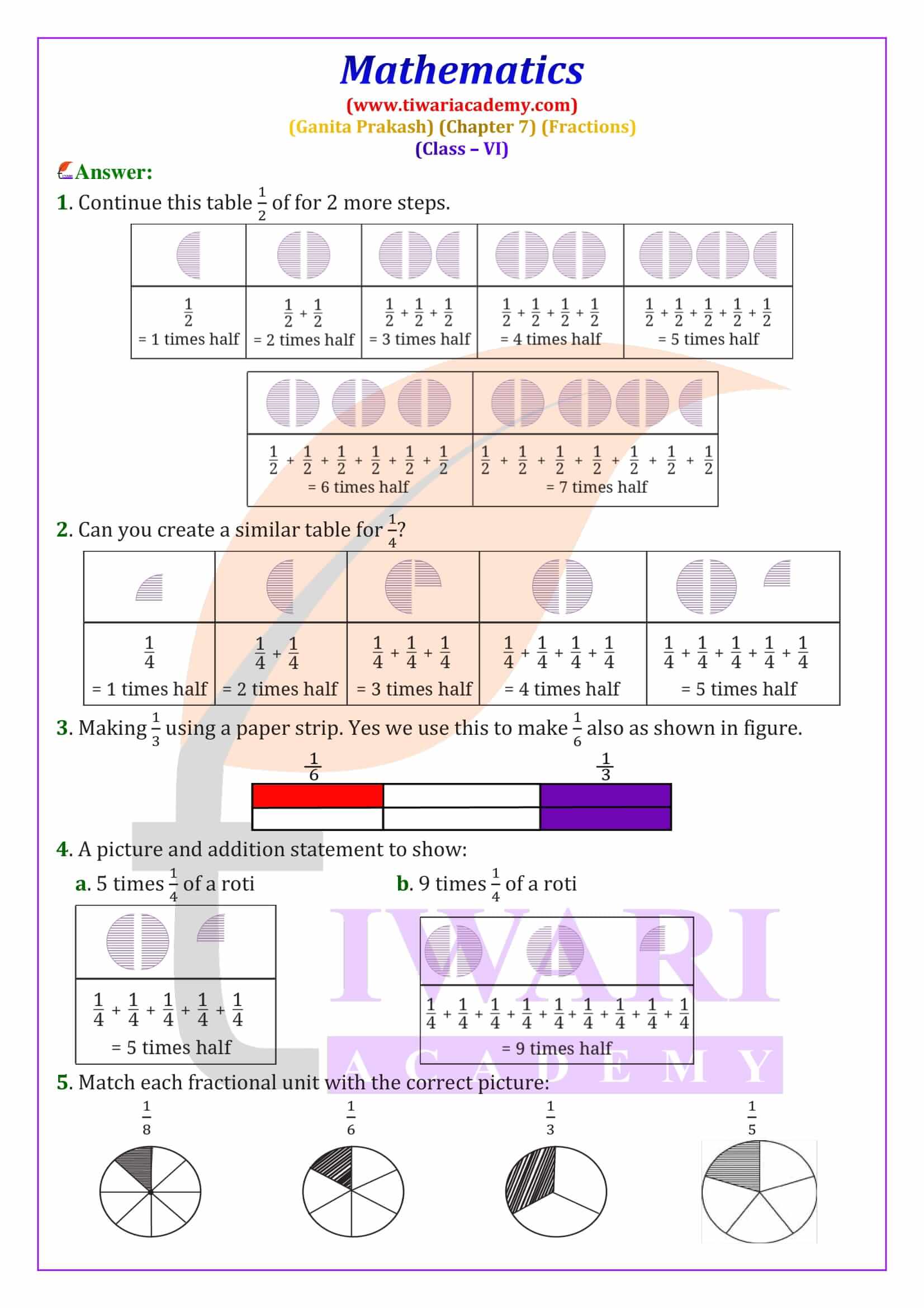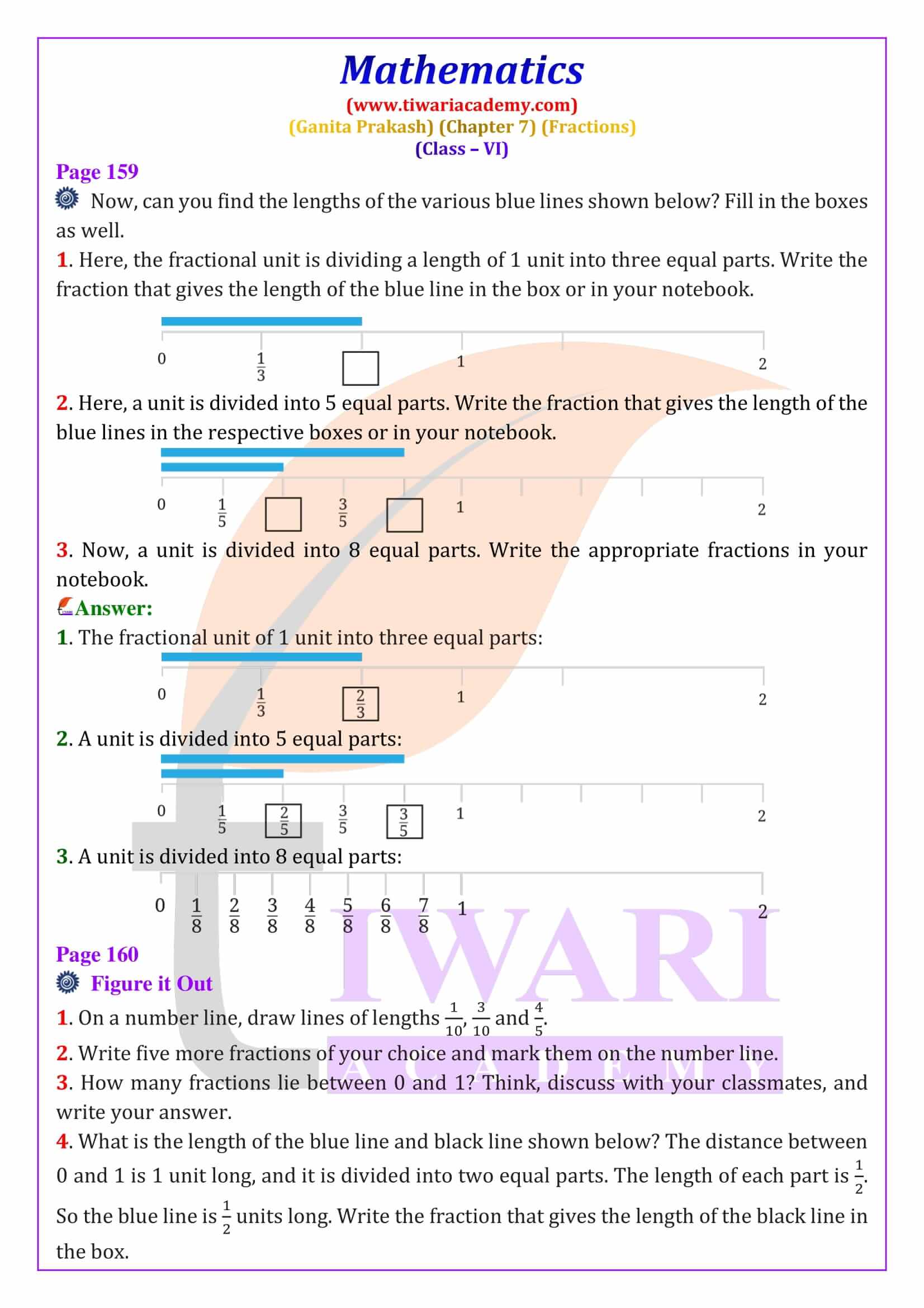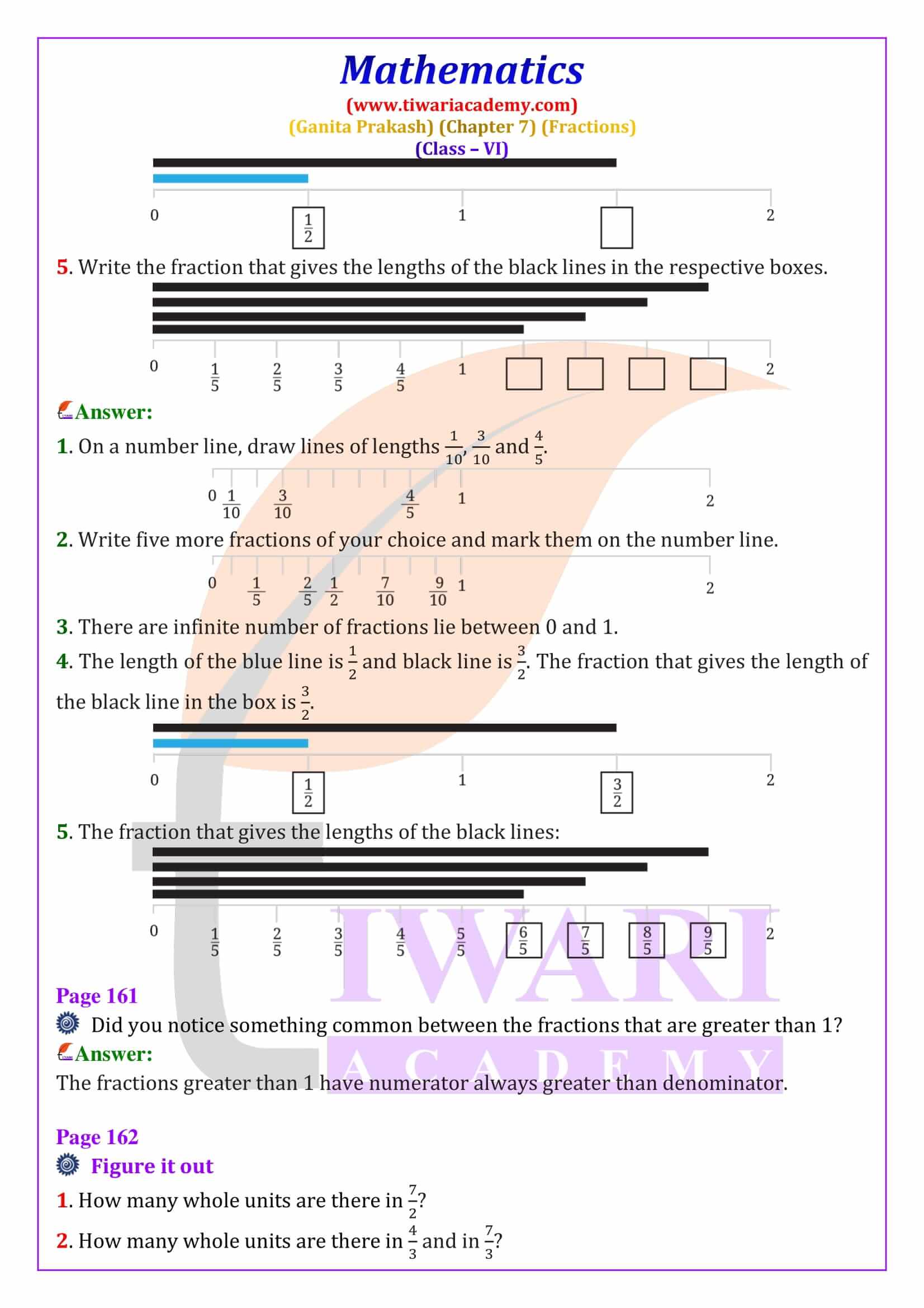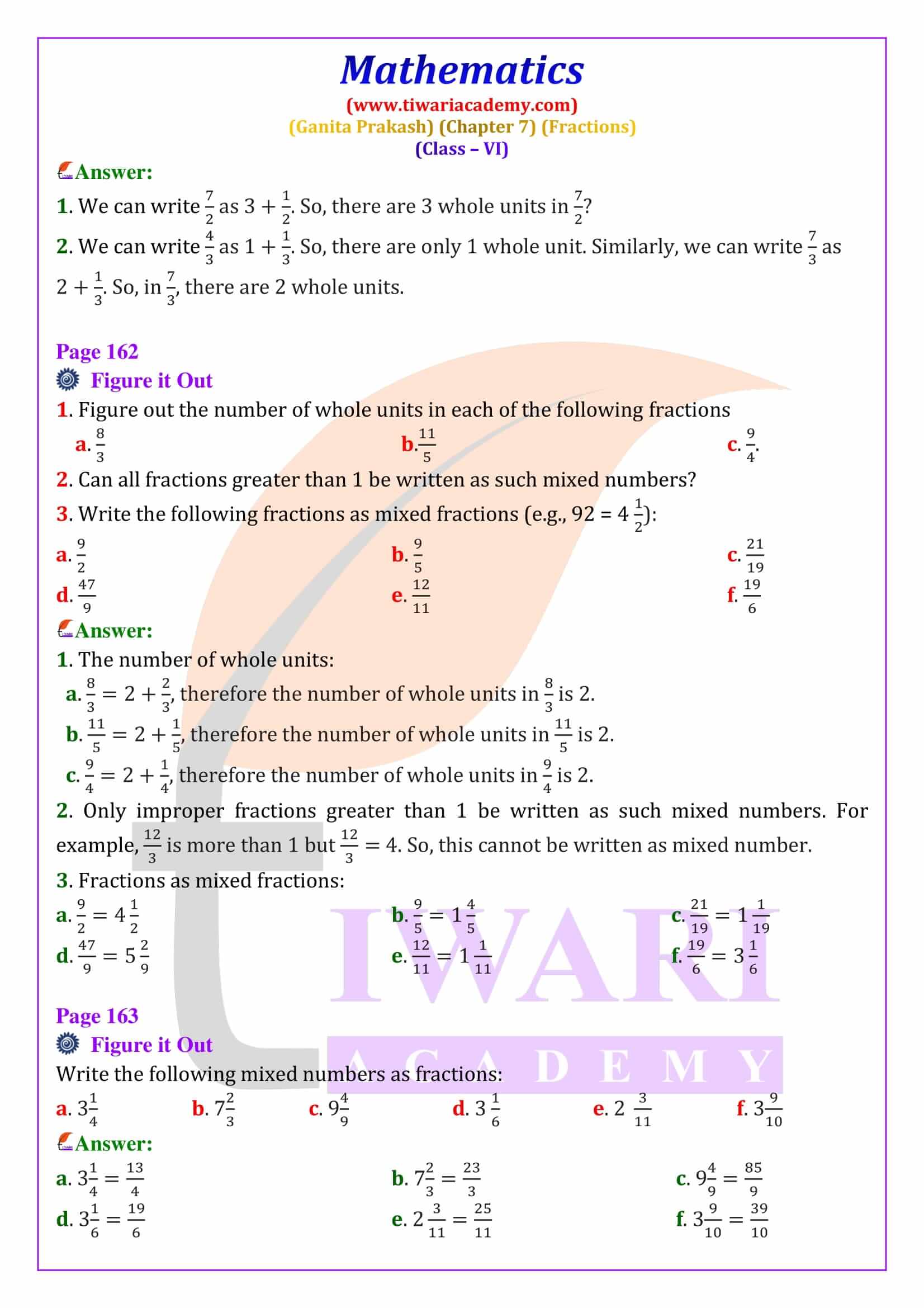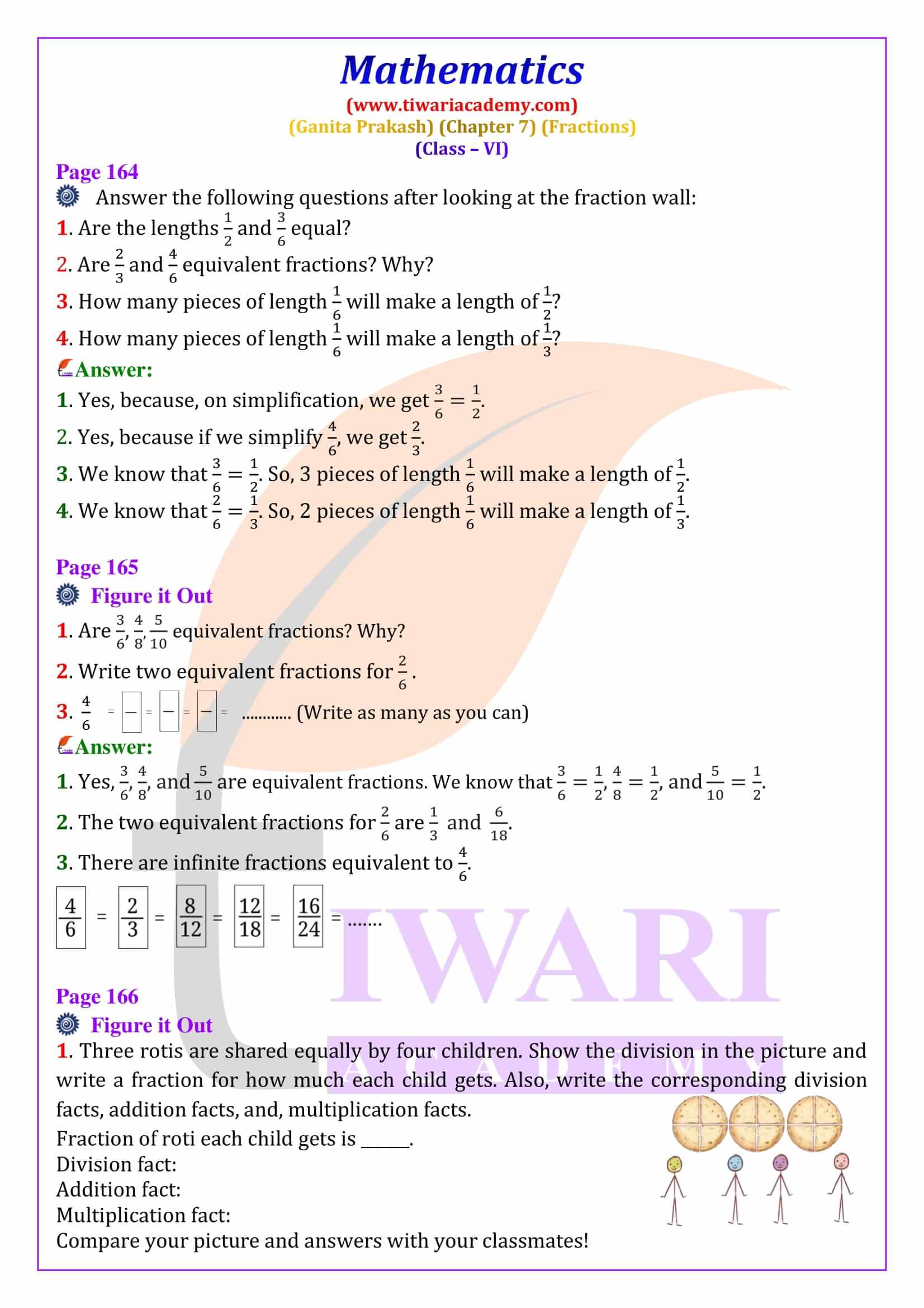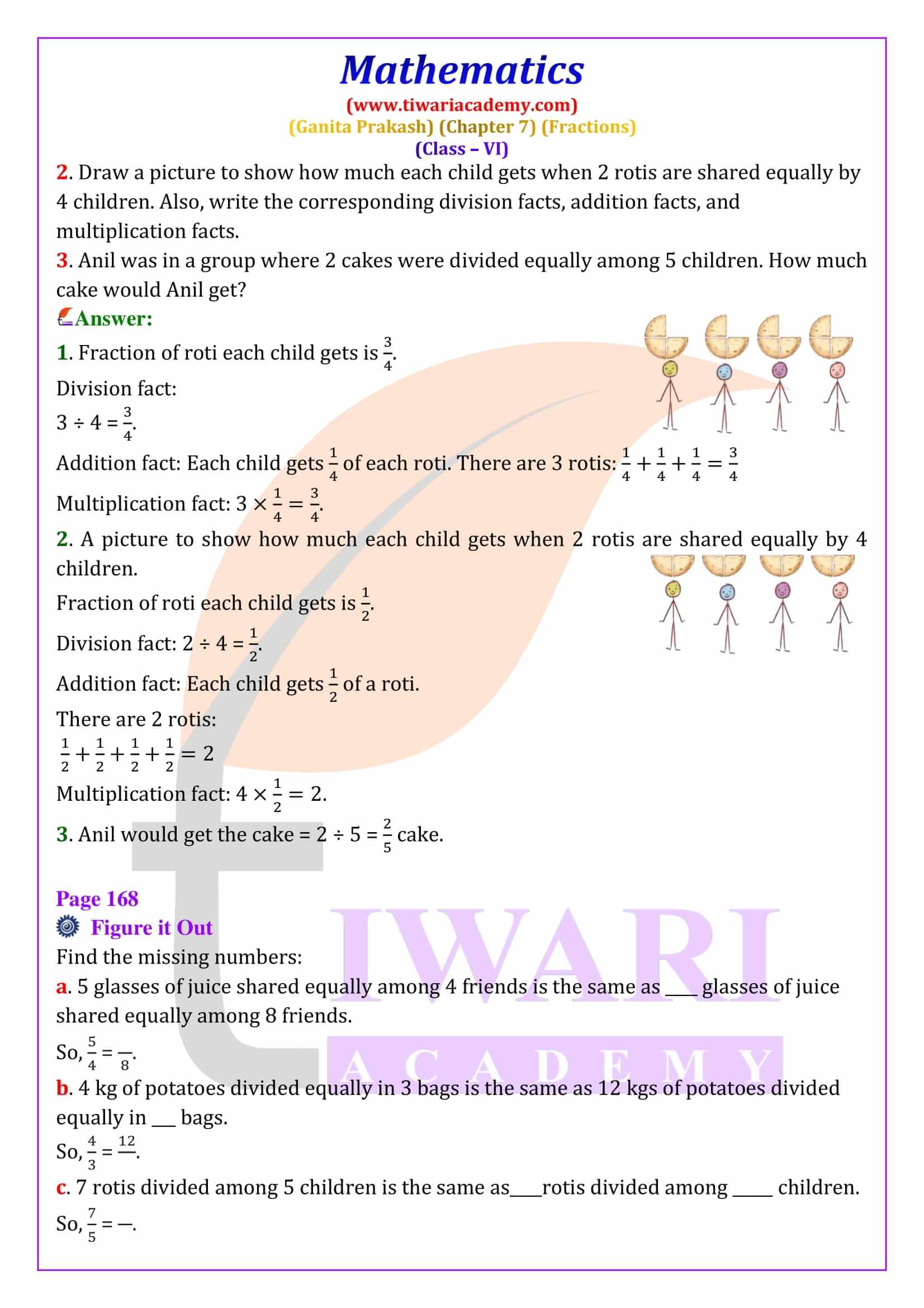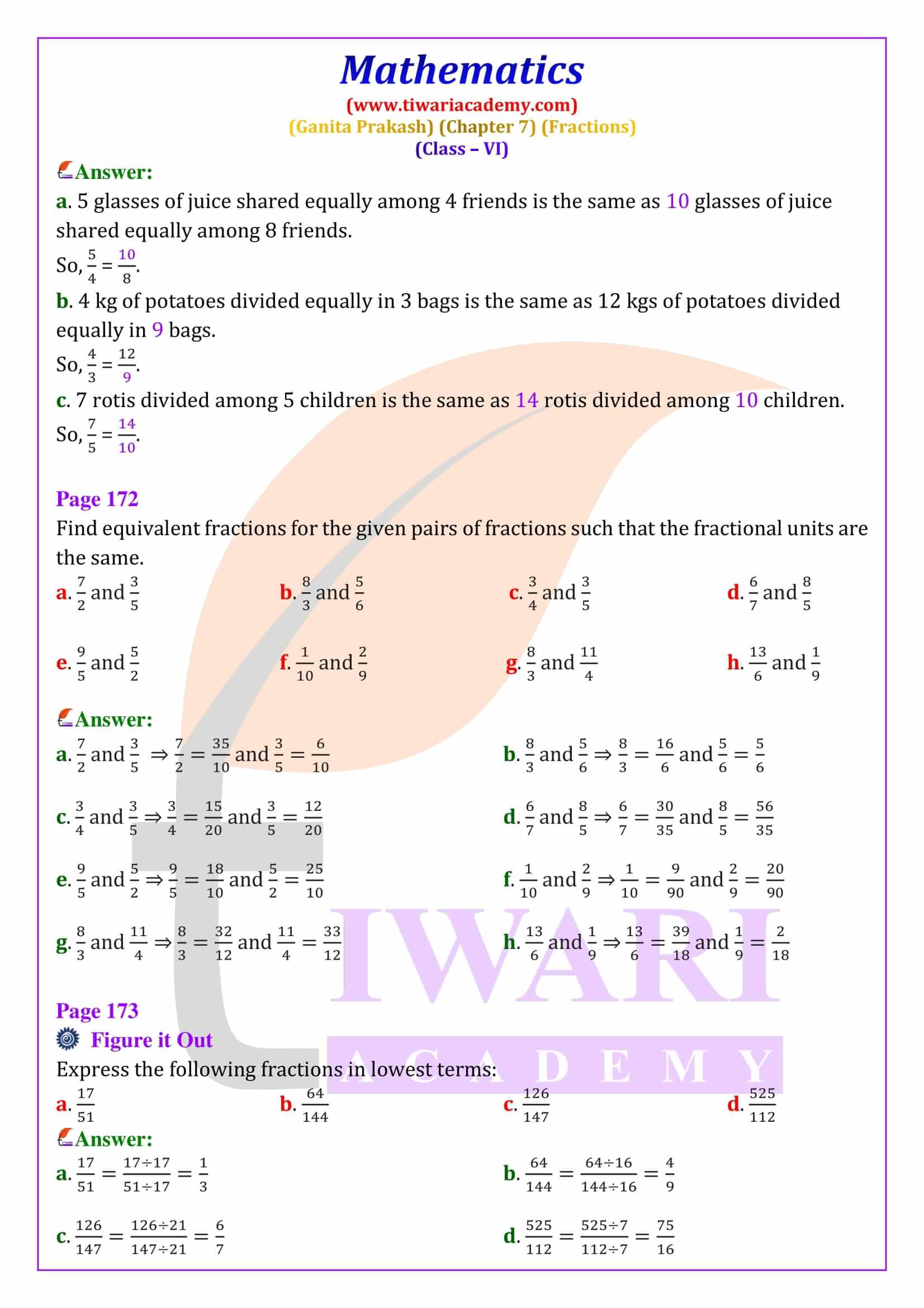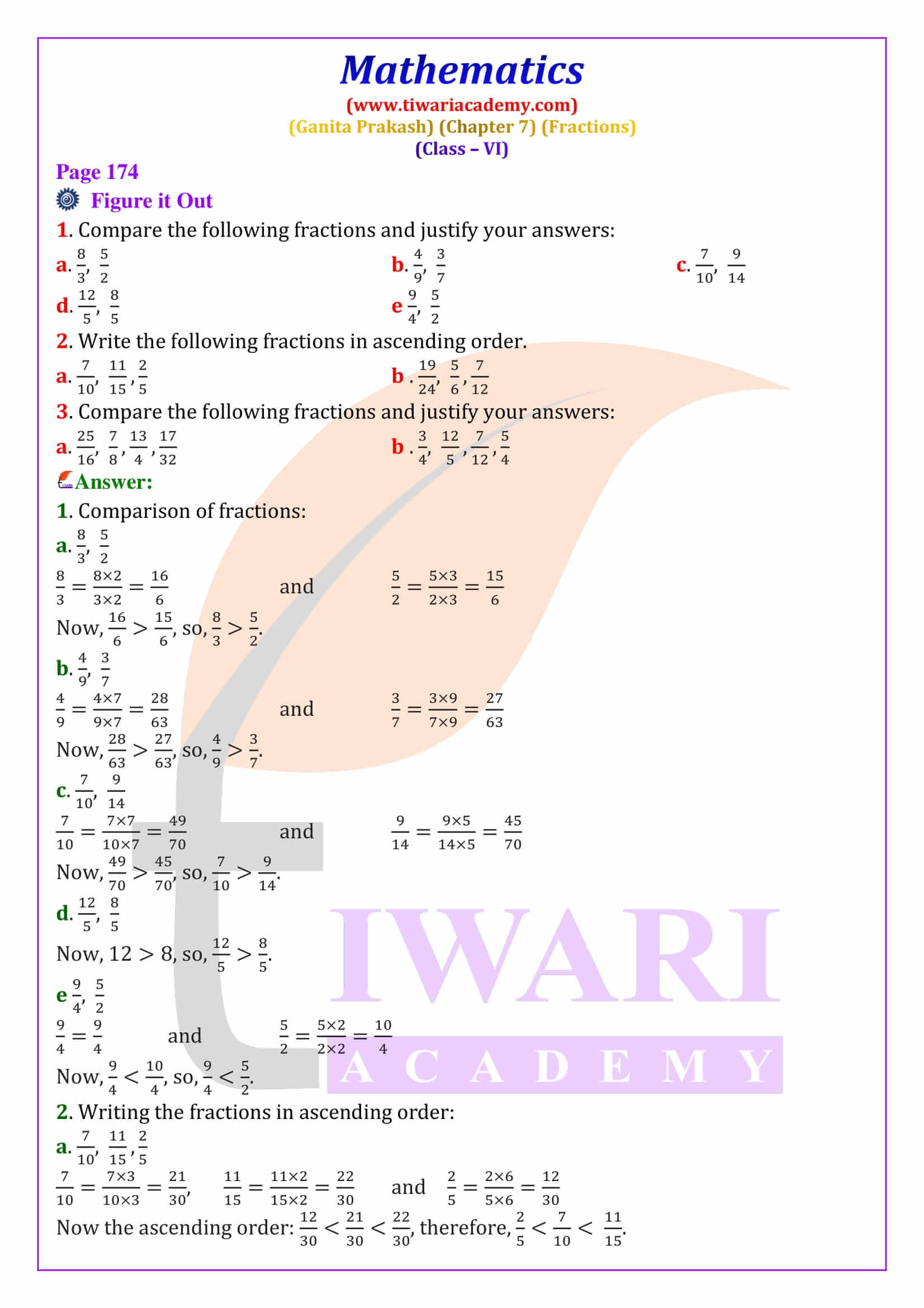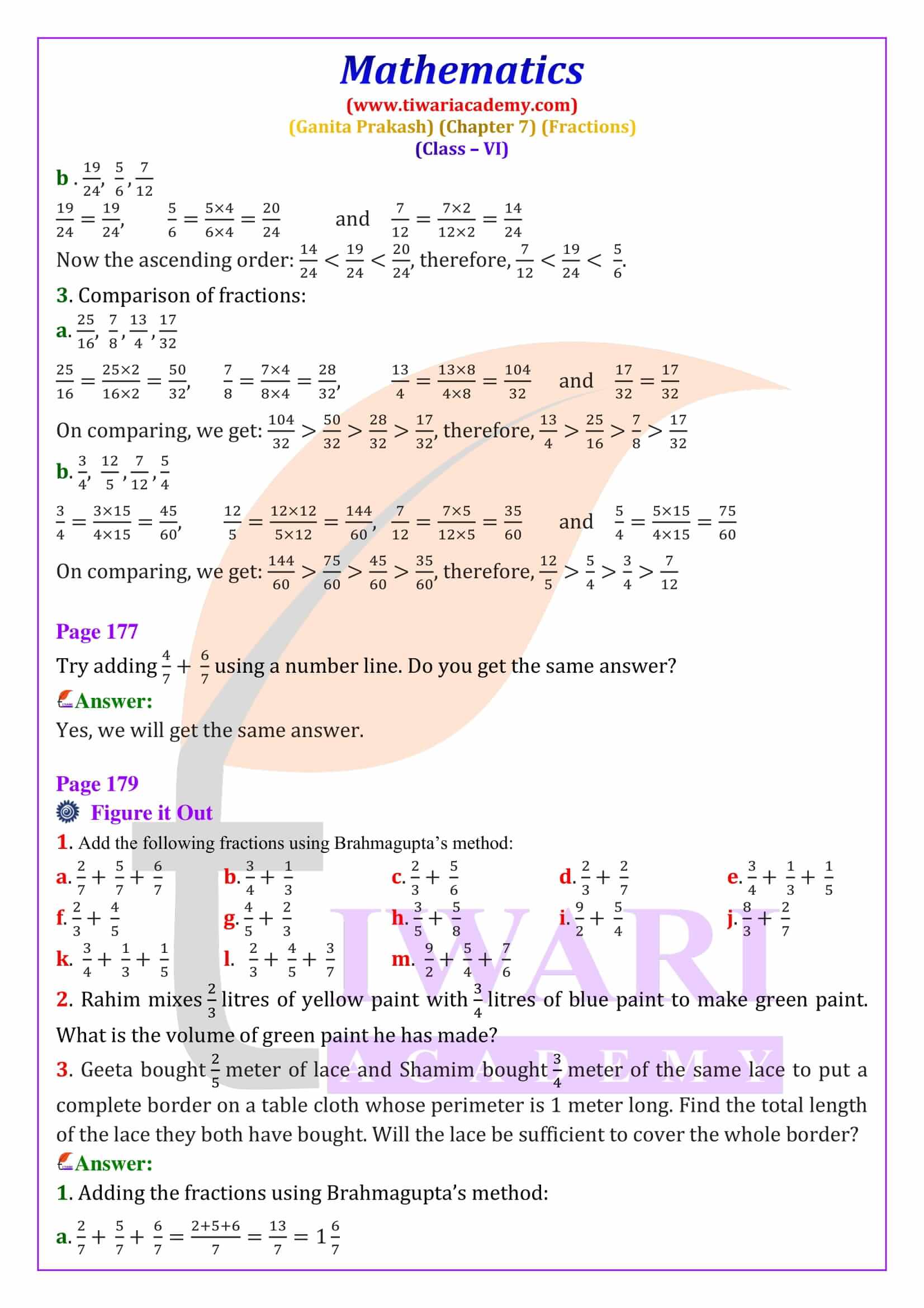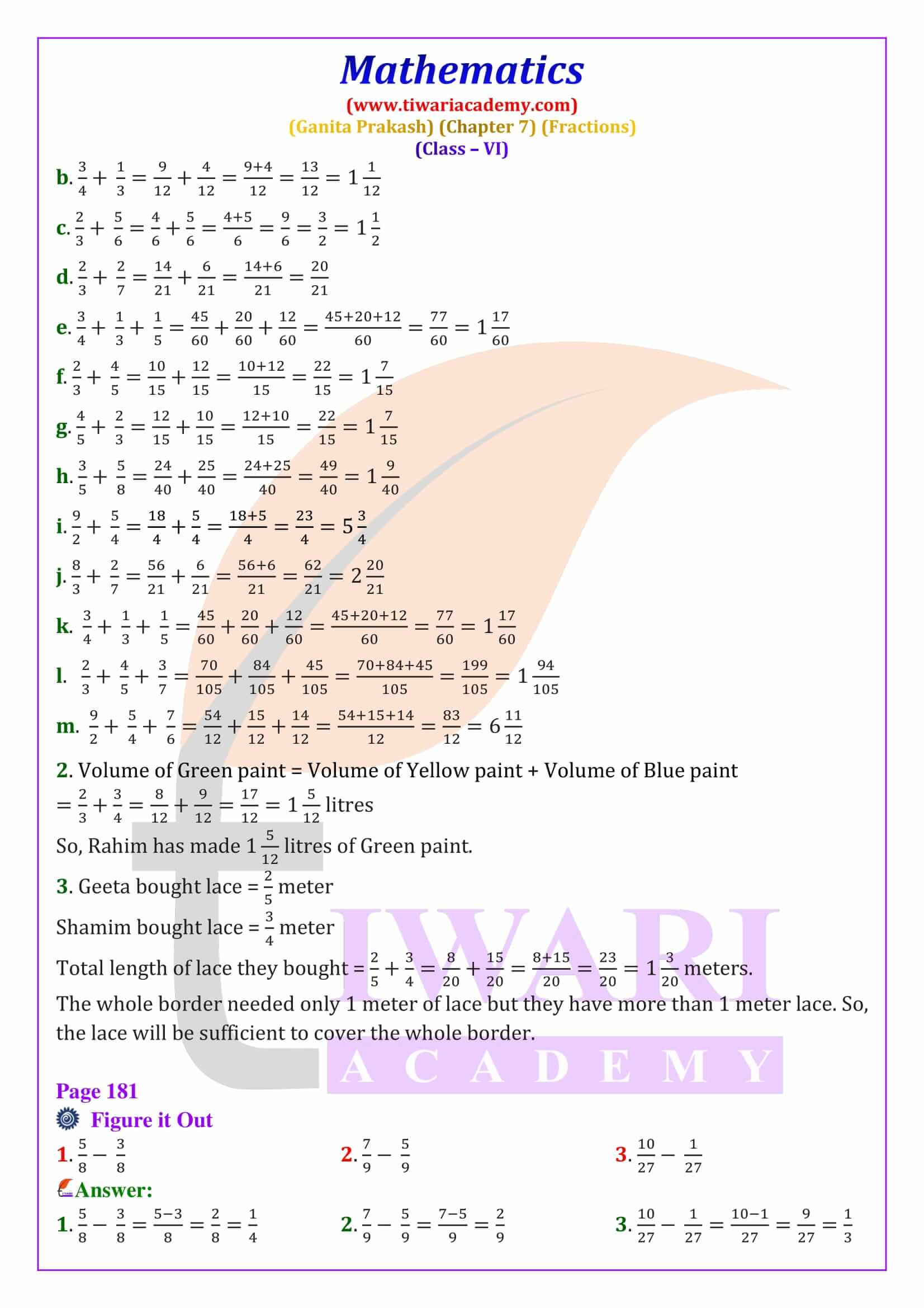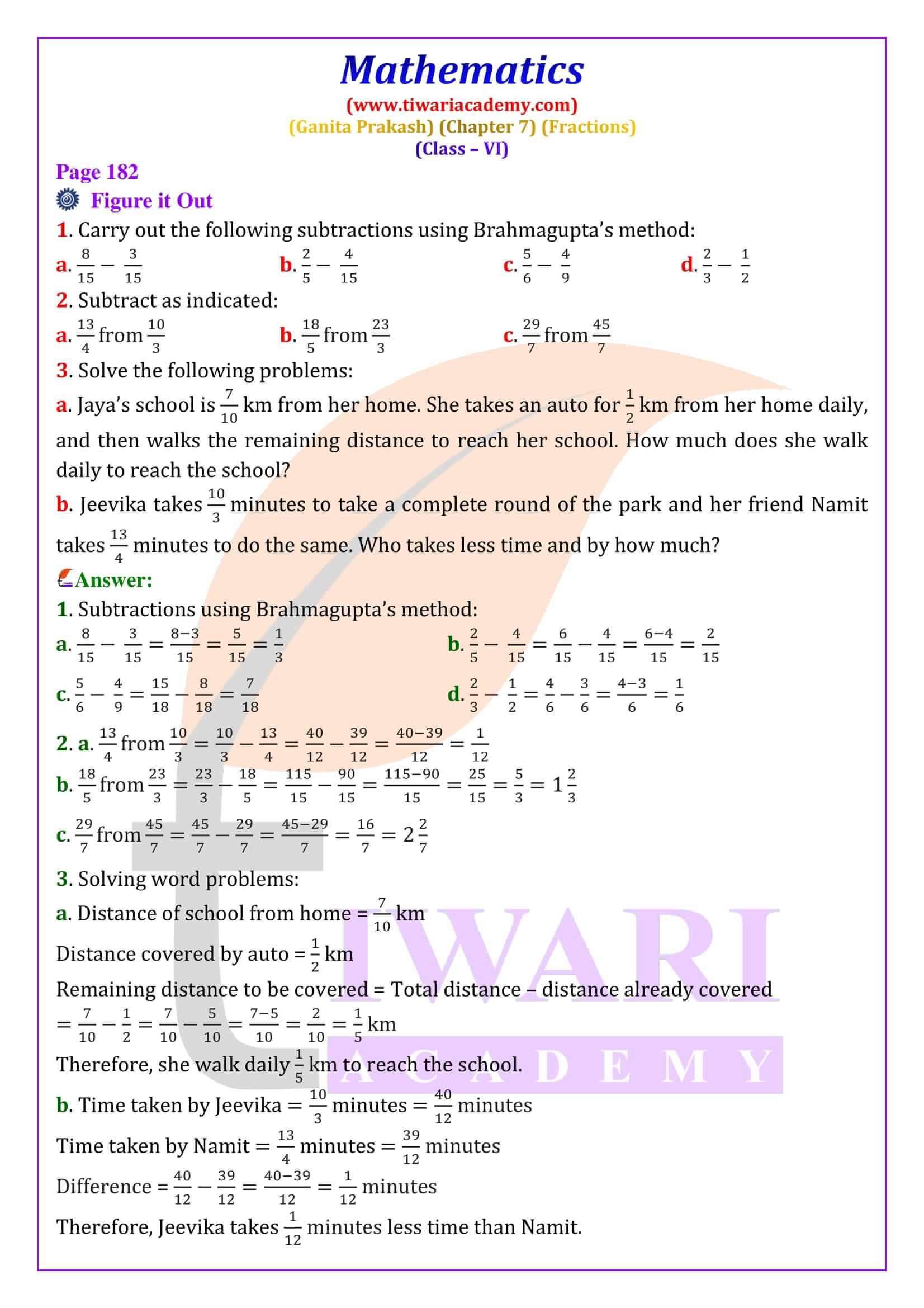NCERT Solutions for Class 6 Maths Ganita Prakash Chapter 7 Fractions for Session 2025-26. Class 6 Math Solutions explain the concept of representing equal parts of a whole through clear examples and step-by-step methods. This chapter covers types of fractions, equivalent fractions, comparison and addition or subtraction of fractions. These NCERT solutions help students understand fractions easily, improve problem-solving skills and prepare for higher classes by connecting mathematical concepts with real-life applications in a simple and effective manner.
Class 6 Maths Ganita Prakash Chapter 7 Fractions Solutions
NCERT Solutions for Class 6 Maths Ganita Prakash Chapter 7 Fractions are designed to make learning clear, simple and engaging. The solutions include solved exercises that guide students on how to approach and solve problems systematically. Visual explanations and word problems connect fractions with real-life situations, helping learners relate abstract numbers to practical examples like dividing food or measuring time. They also promote conceptual clarity, accuracy in calculations and confidence in solving fraction-based problems independently. Overall, these NCERT Solutions strengthen the foundation for future mathematical learning and logical thinking.
Class 6 Maths Ganita Prakash to Understand Fractions
Class 6 Maths Ganita Prakash Chapter 7 introduces students to the concept of fractions, which represent equal parts of a whole. Fractions are an essential part of our daily lives—whether it’s dividing a pizza, sharing a bar of chocolate or measuring quantities in cooking. The chapter begins by explaining that a fraction consists of two numbers: the numerator (number of parts taken) and the denominator (total number of equal parts). Through colorful illustrations and simple examples, students learn how fractions are used to express parts of objects or quantities. As a teacher, it’s important to connect these examples to real-life situations so that students understand that fractions are not abstract—they describe how we divide and share things every day.
Types of Fractions: Like, Unlike and Equivalent
The next part of Class 6 Maths Ganita Prakash Chapter 7 explains the different types of fractions. Students learn about like fractions, which have the same denominators and unlike fractions, which have different denominators. They also explore equivalent fractions—fractions that represent the same value even though their numerators and denominators are different (for example, 1/2 = 2/4 = 3/6). Visual aids such as shapes divided into equal parts help students clearly see this equality. Activities like shading portions of figures make the concept concrete. This section strengthens observation and comparison skills, helping students realize that fractions are flexible representations of the same amount. As a teacher, you can guide them to find equivalent fractions by multiplying or dividing both numerator and denominator by the same number.
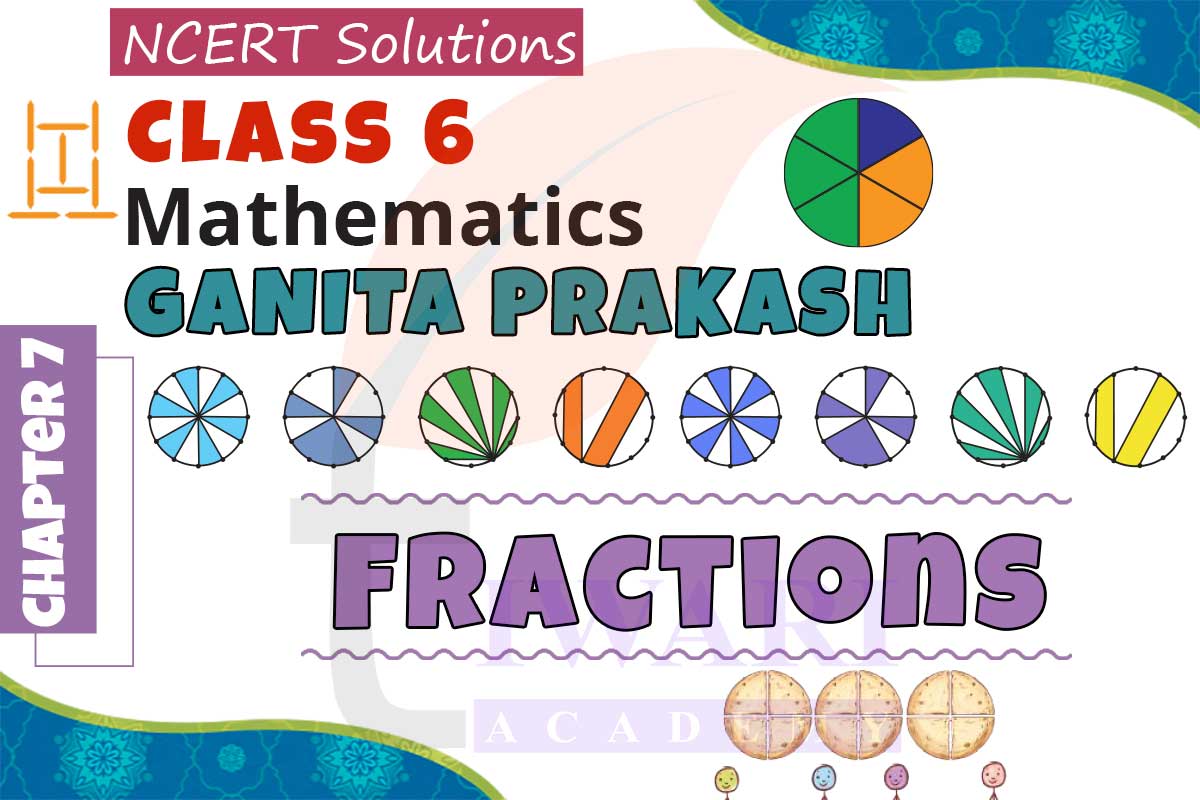
Comparing and Ordering Fractions
Once students understand the types of fractions, they move on to comparing fractions. Class 6 Maths Chapter 7 explains that to compare fractions, they must have the same denominators. If denominators differ, we find a common denominator before comparison. Visual representations like fraction bars or pie charts are extremely useful here. Students are encouraged to arrange fractions in ascending and descending order, which develops logical reasoning and number sense. For example, comparing 3/8 and 5/8 is easy because the denominators are the same—5/8 is larger. However, comparing 1/3 and 2/5 requires converting them to a common base. These exercises make students comfortable with fraction relationships and prepare them for advanced arithmetic with rational numbers in higher classes.
Addition and Subtraction of Fractions
A major part of 6th Maths Ganita Prakash is learning how to add and subtract fractions. The rules are simple: for like fractions (same denominators), we add or subtract the numerators directly. For unlike fractions, we first make their denominators the same using the least common multiple (LCM) method. Class 6 Maths Ganita Prakash Chapter 7 provides several step-by-step examples such as adding 2/5 + 3/5 or 1/2 + 1/3. It encourages students to visualize operations through shapes and real-life examples—like adding portions of a cake or subtracting parts of a rope. Teachers can enhance understanding by using paper-cut activities or fraction strips in class. This section not only strengthens arithmetic skills but also builds precision and careful calculation habits among students.
Fractions in Daily Life and Practice Exercises
Class 6 Ganita Prakash Chapter 7 focuses on applications of fractions in everyday life and includes practice problems to test understanding. Students learn how fractions are used in measuring quantities, dividing money, telling time and representing data. The exercises are designed to mix conceptual and word problems so students can apply what they’ve learned in practical situations. For example, “Riya ate 3/8 of a chocolate and her friend ate 2/8—how much did they eat together?” Such problems make math relatable and fun. The chapter concludes by revising all operations—comparison, simplification, addition and subtraction—ensuring students develop accuracy and confidence. As a teacher, the goal is to make them see fractions not as numbers on paper but as tools to understand sharing, measurement and fairness in life.
